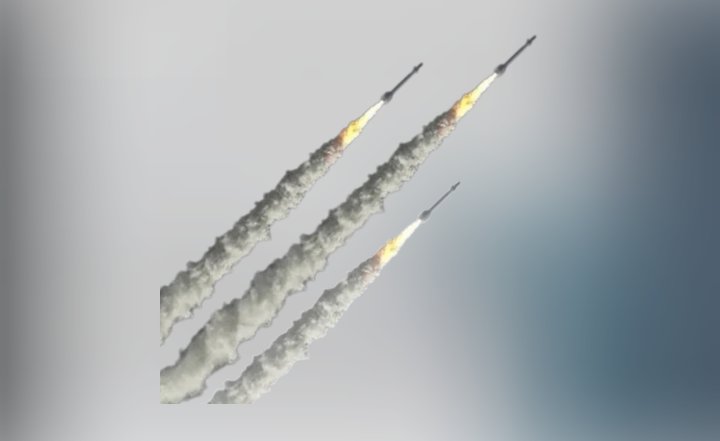
Photo: Facebook page of Samah Idriss
Lebanon is in the grip of a spontaneous mass uprising unprecedented in that country’s history. Hundreds of thousands of people are taking to the streets daily in this tiny Arab country of 5.5 million in an explosion of rage against IMF-imposed austerity, corruption, dysfunction and widening inequality.
The uprising began on Oct. 17, when the government, in a desperate attempt to shore up an economy sucked dry by predatory Western banks, announced a tax on free WiFi phone applications like WhatsApp. After years of financially squeezing the working class while the rich get richer, this tax was the last straw, sparking people to take the streets in Beirut, Tripoli Sidon, Nabatieh and elsewhere. Protesters include workers, union leaders, students and professionals.
Banks and schools have been closed, major roads seized, with protesters defying army attempts to open them. On one day an estimated quarter of the population were in the streets, and on another day, a human chain of demonstrators stretched over 100 miles on the coast, from Tripoli to Sour. In Beirut and Nabatieh, lines of women, sometimes four deep, have defended the front of the protests against attack by the Army and other groups. Gender equality, LGBTQ rights and women’s empowerment have all been common themes of the protests.
The huge and spontaneous uprising cuts across and unites people from all of the country 18 religious sects. Demonstrators are carrying Lebanese flags, rather than the flags of individual groups, and a popular chant is “One, one, one, we are one people.”
By the 13th day, the demonstrations brought down the Lebanese government by forcing the resignation of Prime Minister Saad Hariri. The big question is: What happens next?
Neoliberal policies targeted
Lebanon’s debt burden was $86.2 billion in the first quarter of 2019, according to the country’s minister of finance. Lebanon suffers from the worst GDP to debt ratio in the world at 150 percent.
The Oct 17 announced WhatsApp tax of .20 cents per call and $6 monthly fee follows years of Lebanon’s rich one percent looting the government’s coffers while adhering to an IMF plan charging workers and the poor ever-higher taxes. Meanwhile, the government has become so dysfunctional that it can’t even provide 24-hour electricity, tap water or pick up the garbage.
The situation has become unbearable. With youth unemployment close to 40 percent, young people are expected to work abroad and send home remittances. Now, however, there are fewer jobs abroad. For those who can find work at home, pay in Lebanon is so low compared to living expenses that many people borrow from the banks to pay their rent.
Sectarian system
The demonstrations also aimed their ire at the political elite that has mismanaged the country since the end of the 1975-90 civil war. Chanting “We are all Lebanese,” and wearing hats that said “Lebanese first,” people rebelled against their own corrupt sectarian leaders. They raged against the political system where heads of the 18 officially recognized religious groups divide power and state funds between them. Lebanon’s 1943 “National pact,” a legacy of French colonialism, decreed that the President must always be a Maronite Christian, the Premier a Sunni Muslim and the speaker of the House a Shiite Muslim.
Fighting corruption
Protesters are targeting the Banque du Liban (BDL) and its leader, Riad Salame, the architect of the near-collapse of the economy in the service of U.S. financial policy. Activists charge that while in office Salame embezzled $106 billion from the people under the pretext of exchange rate adjustments. They want him to return the money.
Another focus is Fouad Sinoria, a former Prime Minister backed by the U.S. and Saudis, who protesters want to return $11 billion stolen during his 2005-2009 term. Then there is Najib Mikati, the richest man in Lebanon, who owes $11.2 billion, demonstrators say, and currently facing charges for embezzlement.
As for Hariri, recent revelations that the newly resigned Prime Minister gave $16 million to a South African bikini model while Lebanese suffer has filled protestors with disgust. Hariri, and his Sunni-based Future Movement, are aligned with Saudi Arabia.
Lebanon now has a caretaker regime which cannot pass legislation, or take measures to solve the economic crisis until a new government is elected. On Nov. 1, President Michel Aoun called for ‘non-sectarian” government and a package of reforms was put together that could possibly pave the way for this to happen.
Hezbollah
Not all forces in the government are part of the longstanding corrupt oligarchies that have ruled Lebanon for decades and sold it to international banks. The Shiite group Hezbollah is relatively new to the government, and did well in the last national elections, forming a national unity government with Aoun’s Christian-based Free Patriotic Movement. Since they are part of the Lebanese government, however, some of the blame for the economic situation which they have not produced has rubbed off on them.
Hezbollah is based in the Shiite community, Lebanon’s largest religious group and traditionally its poorest and most disenfranchised. The group has won Shiite allegiance through its social service programs, lifting many out of poverty in that community for the first time in Lebanon’s history.
The group is often called “the resistance” by individuals of all sects in Lebanon. Hezbollah has its own powerful militia which drove the Israeli military out of southern Lebanon in 2000, ending a brutal 18-year occupation. In 2006 Hezbollah was instrumental in pushing back a massive Tel Aviv invasion of Lebanon.
Most recently, Hezbollah fighters played a key role in forcing ISIS and related groups out of Syria and defending Lebanon’s borders from fundamentalist encroachment. Because it fought on the side of the Syrian government, and due to its close relationship with Iran, the group is on Washington’s “terrorist” list. Israel has staged several large military exercises specifically stimulating an attack on Hezbollah, and looks for a political opening to do so.
Attempts to divert protests
Protests are not organized or homogeneous. Among the demands are the passing of new electoral laws outside of sectarian constraints, early parliamentary elections and an economic rescue plan beginning with the recovery of looted money. Some demonstrators are calling for every government official to resign, echoing the Arab Spring-era chants that “The people want the downfall of the regime.” But the resignation of President Aoun and his Hezbollah allies would leave a political vacuum that could be filled by forces far to the right.
With Israel always seeking to attack, and with Syria barely recovering from attempts to dismember it, a power vacuum could be exploited to destabilize the country.
Some of those in the streets most loudly calling for the resignation of the entire government work for U.S.-funded non-government organizations. U.S. backed political forces in the Christian community, such as the ultra rightwing Lebanese Forces headed by Samir Geagea, and the openly fascist Kataeb party lead by Samir Gemayel, have tried to twist the protesters’ message as being as aimed against Hezbollah. They seek to discredit the resistance and remove the presidency without an alternative in place.
Walid Jumblatt of the Druze-based Progressive Socialist Party, also sees the anti-government protests as a chance to strengthen his base against Aoun and Hezbollah.
U.S. wants to destabilize Lebanon
Imperialism and its agents would like to utilize the righteous protests in Lebanon to attack, discredit and possibly disarm Hezbollah. An indication of Washington’s intentions is that fact that major U.S. media like the Wall Street Journal, the Israeli press, Saudi-funded media like al-Arabiya, and the Banque du Liban (BDL) deliberately distort the demonstrations as anti-Hezbollah, while downplaying or ignoring protesters’ grievances against corruption and the banks.



